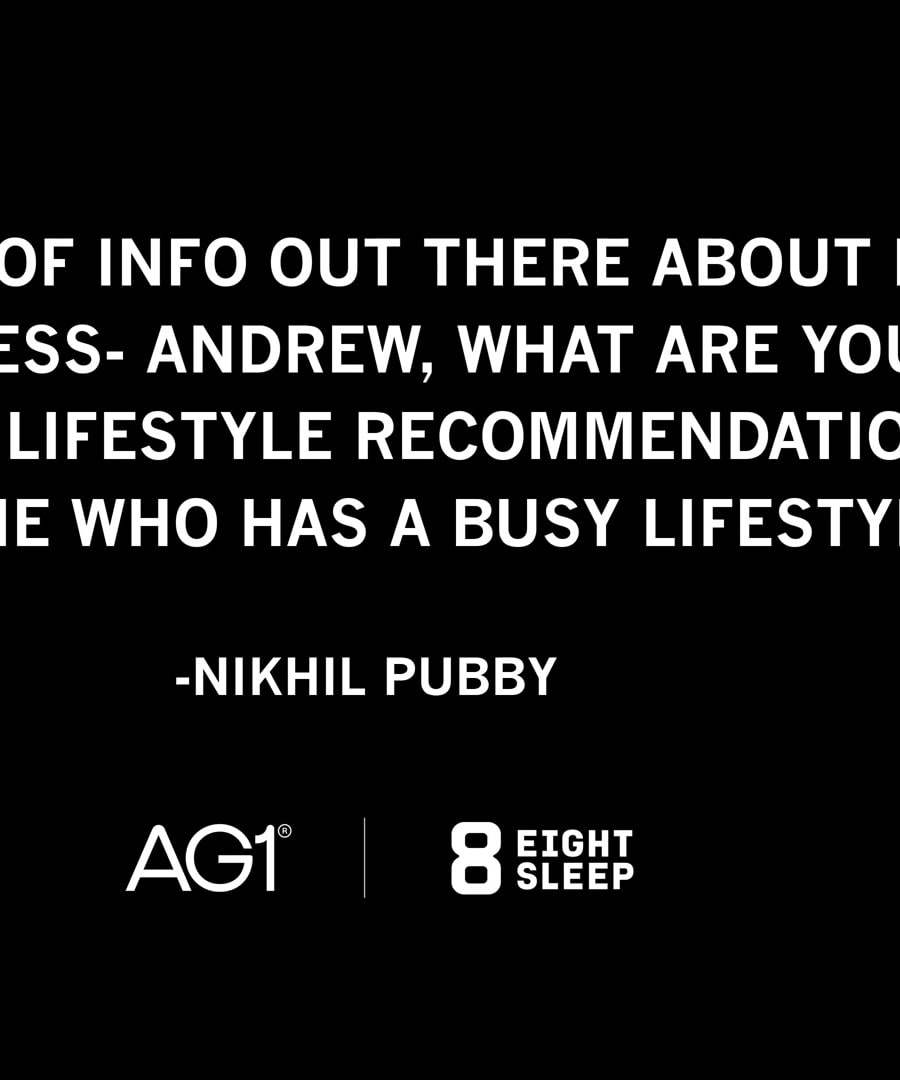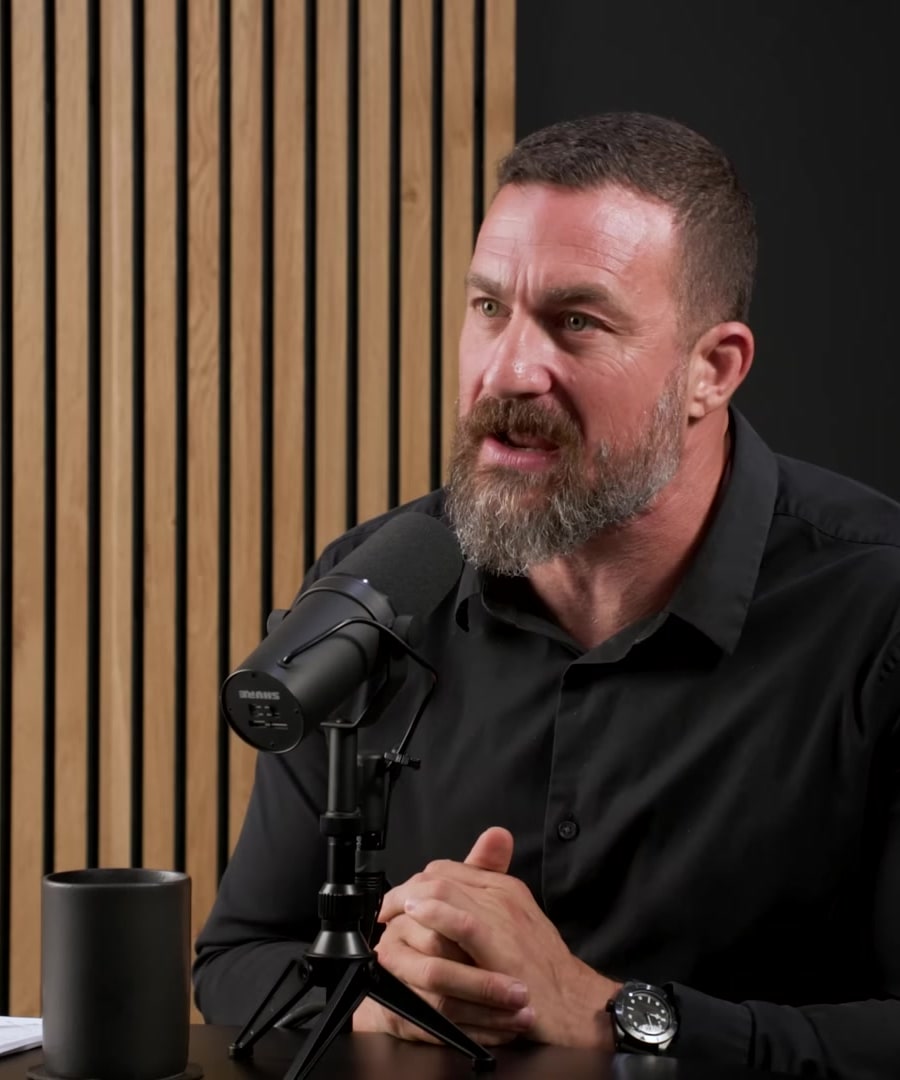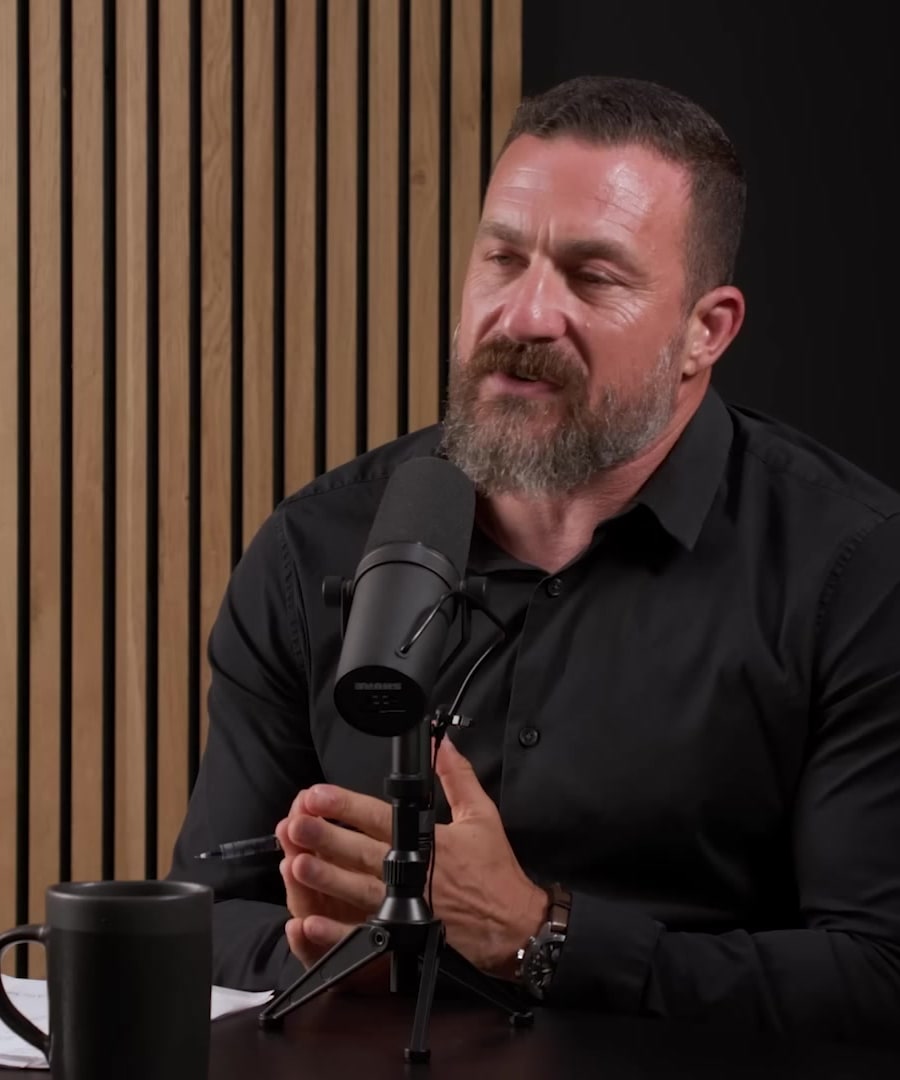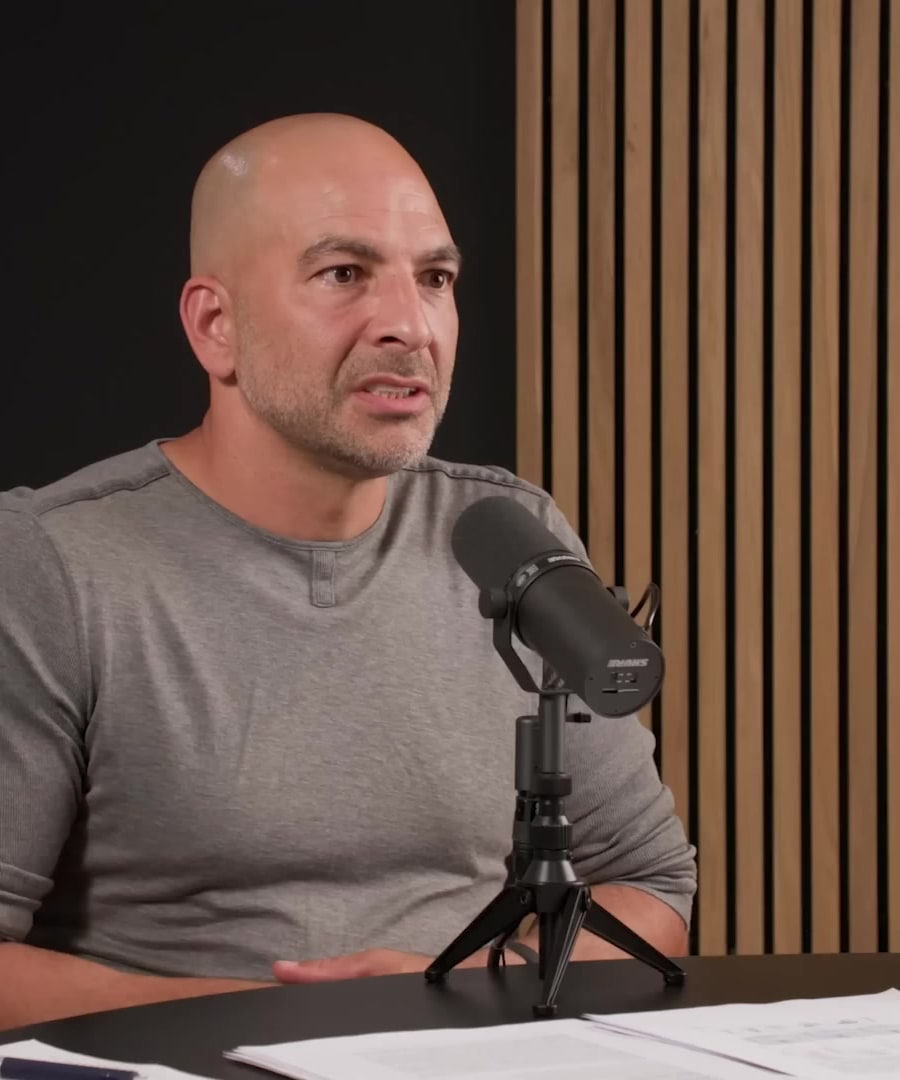What workout routine is better? 3 times a week full body or splitting upper and lower body
Sources:
Choosing between a full-body workout three times a week and splitting upper and lower body workouts depends on individual preferences and goals. Here's a comparison based on insights from and :
Full-Body Workouts (3 Times a Week)
Pros:
- Efficiency: Covers the entire body in each session, which can save time.
- Practicality: Only requires three days a week, reducing scheduling conflicts if a workout is missed.
- Recovery: Ensures balanced recovery, avoiding overtraining specific muscle groups 1.
Cons:
- Fatigue: Some people might find full-body workouts more exhausting, leading to reduced performance at the end of the workout 2.
- Volume: Reduced volume per muscle group per session, which might not be optimal for hypertrophy for some individuals.
Upper/Lower Split Workouts
Pros:
- Focused Training: Allows for greater focus on specific muscle groups, potentially improving hypertrophy and strength 3.
- Flexibility: Can be adjusted to fit into more frequent weekly training schedules (e.g., 4-6 days a week).
- Reduced Fatigue: Minimizes overall fatigue per session, potentially improving performance and effort in each part of the workout 3.
Cons:
- Complexity: Requires more planning to ensure each muscle group is adequately trained and recovered.
- Consistency: Missing a session can lead to imbalanced training frequencies for muscle groups.
Key Considerations
- Adherence: The best workout routine is one you can consistently stick to. If you prefer shorter, more focused sessions, an upper/lower split might be better. If you value simplicity and fewer workout days, full-body workouts might be optimal 4.
- Goals: If maximal strength and hypertrophy are the goals, an upper/lower split could be advantageous due to higher volume and focus on individual muscle groups.
- Lifestyle: Consider your weekly schedule and how much time you can realistically devote to training. Full-body workouts are often ideal for those with busier lifestyles.
In summary, both routines can be effective, but your choice should align with your personal preferences, goals, and lifestyle.
RELATED QUESTIONSWhat do experts recommend?
Sources:
Experts like , , and offer detailed insights on choosing between full-body workouts and upper/lower splits, emphasizing practicality and personal preference.
Full-Body Workouts
Andrew Huberman and Jeff Cavaliere highlight the practicality of full-body routines, especially for those with busy schedules. Jeff Cavaliere mentions that full-body workouts reduce the likelihood of missing sessions and help maintain a consistent workout schedule. However, he personally does not prefer full-body workouts due to potential fatigue and longer session duration, which might deter some from sticking to their routine 1.
Upper/Lower Splits
Jeff Cavaliere explains that split routines can offer focused training and improved performance since they allow for specific muscle groups to be targeted on different days. This split can also help in maintaining focus and effort in each session, avoiding the drop in performance that might occur towards the end of a longer full-body workout 2. Jeff Cavaliere suggests that one benefit of splits is that they allow for better management of effort, which drives results.
Considerations
-
Adherence: Cavaliere stresses that the most effective workout routine is the one that you can consistently adhere to. If a split routine fits better into your schedule and you enjoy it more, it might be more beneficial than a full-body routine despite any theoretical advantages of the latter 1.
-
Personal Preference: Andy Galpin suggests that both full-body and split routines can be effective. It ultimately boils down to personal preference and goals. He emphasizes giving individuals some autonomy in their training choices, which can help in sticking to the routine 3.
In summary, experts recommend choosing a workout routine based on your personal schedule, preferences, and ability to consistently follow it. Both full-body and upper/lower split routines have their benefits, and the best choice depends on what you can regularly commit to and enjoy.
RELATED QUESTIONS-
Which is better for growing big
Sources:
For muscle growth, the choice between full-body workouts and split routines can depend on several factors, including personal preference, schedule, and adherence. Here’s what experts say:
Full-Body Workouts
suggests full-body workouts three days a week can be more resilient to life’s demands. If a session is missed, you’re only 48-72 hours away from the next opportunity, providing greater consistency and frequency in training each muscle group. He notes this approach isn't necessarily more effective but offers a practical balance that is easier for most people to maintain 1.
Split Routines
mentions that split routines, such as push-pull-legs, might be more appealing to those who prefer focusing on specific muscle groups per session. This can help in managing effort and recovery better since you target related muscle groups together. For muscle hypertrophy, having focused sessions can lead to better performance and growth as each session's aim is more concentrated 2.
Practical Recommendations
- Consistency: A routine that you can stick to consistently is critical. Whether it's full-body or a split, adherence is key to seeing results 2.
- Recovery and Frequency: Both experts underline the importance of recovery. Training frequency matters, but it should align with your ability to recover between sessions. Regular and balanced training without overtraining specific muscles is crucial 3 1.
- Autonomy in Choices: also highlights the value in mixing approaches, where you might combine days of full-body workouts with split routines. This hybrid approach can ensure comprehensive muscle engagement and recovery 4.
For muscle growth, both full-body workouts and split routines can be effective. The best choice depends on your lifestyle, preferences, and ability to maintain consistent and effective training sessions.
RELATED QUESTIONSCan I do it like upper lower core or mix core with lower
Sources:
You can structure your workouts in various ways, including upper body, lower body, and core, or mix core exercises with lower body exercises. Here are the insights from , as shared on the :
Training Core with Upper and Lower Body
- Effective Stabilization: It’s beneficial to train the core along with both upper and lower body exercises to enhance overall stability. For instance, staggering your stance while performing resistance training exercises like curls or overhead tricep extensions forces you to engage your core through anti-rotation, thus mimicking daily life movements 1.
- Daily Movement Patterns: Most daily activities involve some form of twisting or stabilization, so incorporating core training with these movements can better prepare your body and reduce the likelihood of injury. Movements that require keeping your belly button facing forward, like certain yoga and Pilates poses, also help stabilize the spine and prevent injuries 1.
Practical Application
- Staggered Stance Exercises: Incorporate exercises that require a staggered stance to engage your core more effectively, such as performing curls or tricep extensions with one foot forward.
- Anti-Rotation Movements: Focus on anti-rotation exercises that prevent your body from twisting, such as holding positions that force stability, similar to certain yoga poses.
Both approaches—dedicating separate sessions to upper/lower body and core or mixing core exercises with lower body workouts—can be effective, depending on your goals and schedule. Integrating core exercises into all sessions can enhance stability and prepare your body for real-life movements.
RELATED QUESTIONSOkay thanks. If I do upper lower split, can I workout 6 days a week
Sources:
Yes, you can work out 6 days a week using an upper-lower split, but there are important considerations to keep in mind regarding recovery and practicality.
Practicality and Recovery
and discussed the importance of workout frequency and ensuring adequate recovery. While it's possible to structure a 6-day workout routine, ensuring that your muscles and nervous system are adequately recovered is crucial.
Key Points
-
Total Load and Volume: Consistency in load and volume is essential. Even if you split your workouts, the total volume and intensity should meet your goals for muscle growth without overtraining 1.
-
Resilience to Life Events: It's also practical to consider the resilience of your routine to disruptions (like missing a workout). Splitting workouts into upper and lower body segments across 6 days could face challenges if irregularities occur in your schedule 1.
-
Workout Duration: The total duration and frequency must be balanced. notes that balancing upper and lower body workouts and ensuring adequate rest is vital to prevent systemic fatigue and maintain long-term adherence 2.
Suggested Approach
- Upper-Lower Split: You can perform upper body exercises on days 1, 3, and 5, and lower body exercises on days 2, 4, and 6, with one rest day.
- Rest and Recovery: Monitor how your body responds and adjust if you experience signs of overtraining or inadequate recovery.
Balancing frequency and ensuring that workouts are sustainable long-term is key to success in any fitness regimen. Adjust as needed based on your recovery and life demands.
RELATED QUESTIONS-
What if I miss some days due to busy schedule
Sources:
When dealing with a busy schedule and missed workout days, and offer practical advice to maintain consistency and flexibility.
Tips for Adjusting Workouts
-
Optimal Timing:
- It's beneficial to train whenever you find the time, whether it's early in the morning or later in the day. Morning workouts can help set your circadian rhythms, but exercise at any time is valuable 1.
-
Emergency Reserve:
- Build flexibility into your goals by allowing occasional misses without guilt. For example, if you plan to work out every day, give yourself 2-3 "get out of jail free cards" for days when you genuinely cannot train due to unexpected events or low motivation 2.
-
Adjusting and Doubling Up:
-
Consistency Over Perfection:
- Focus on what you can do consistently rather than striving for perfection. Missing an occasional workout won't derail your progress. Aim for an 85-95% adherence to your workout plan 4.
-
Structured Flexibility:
- Consider a dynamic schedule that adapts to your weekly consistency and energy levels. Align critical workout days with the times when you're generally most stable and energetic 5.
Practical Advice
-
Short Workouts: Even short bouts of exercise, like quick intense sessions, can be beneficial. For extremely busy days, incorporate exercise "snacks" like a quick run up the stairs or jumping jacks for a minute 6.
-
Adaptive Scheduling: Be flexible with your routine according to your weekly demands. Programs don't need to stick to a strict 7-day cycle; even a 9-day split, for example, could be effective 5.
Utilizing these strategies can help you maintain a robust fitness regimen even with a busy and unpredictable schedule.
RELATED QUESTIONS-
How to quickly get a job as a student without experience
Sources:
To quickly get a job as a student without experience, offers several practical strategies on the :
-
High-Density Environments: Place yourself in environments with high activity, such as tech hubs or university groups, where you're likely to meet people who can offer opportunities 1.
-
Volunteering:
- Attend Events: Volunteer at events featuring interesting speakers and relevant audiences to gain exposure and make connections.
- Go Above and Beyond: Exceed expectations in your volunteering role. Handle extra tasks and be proactive—this can make organizers notice you and invite you to more significant roles 1.
-
Building a Network:
- Start networking by helping out at events. Be professional, predict needs, and solve problems before they arise. The key is to be reliable and proactive, which high performers and organizers will notice 1.
- Gradually, you'll meet influential people who can introduce you to further opportunities.
By aligning yourself with active networks and demonstrating reliability and initiative through volunteering, you can open doors to job opportunities even as a student with limited experience.
RELATED QUESTIONS-
What events should I attend?
To find relevant events to attend, consider the following steps outlined by on the :
-
Industry-Related Conferences and Meetups:
- Attend conferences, seminars, and meetups related to your field of study or desired industry.
- Look for local, national, or even virtual events that host speakers, workshops, and networking sessions.
-
University and College Events:
- Participate in events organized by your university or college, such as career fairs, guest lectures, and networking events.
- Engage with student organizations, clubs, and societies that align with your interests or career goals.
-
Workshops and Skill-Building Seminars:
- Enroll in workshops or seminars that offer skill development in areas crucial to your field (e.g., coding bootcamps, writing workshops, business seminars).
- These can provide practical skills and also opportunities to meet professionals who can offer job leads or internships.
-
Volunteer and Charity Events:
- Attend events where you can volunteer, which often lead to connecting with community leaders and professionals from various sectors.
- Being proactive at these events can showcase your dedication and capability, potentially leading to job opportunities.
By following these guidelines, you can strategically choose events that not only enhance your knowledge but also expand your professional network, increasing your chances of landing a job.
RELATED QUESTIONS-
Any more strategies for getting a job?
Sources:
Here are more strategies derived from the Huberman Lab podcast for getting a job:
-
Visualize Your Goals: Create visual representations of your goals, such as vision boards or lists, to clearly define what you want to achieve. This technique can help keep you motivated and focused on your objectives 1.
-
Leverage Passion and Hard Work: Focus intensively on one thing you are passionate about, especially in your twenties. Commit to working harder at that than anything else. This approach can lead to mastery and significant progress in your chosen field 2.
-
Adaptation Led Programming: Train yourself in different contexts, such as mental and physical stressors, to develop resilience and adaptability. This can make you more effective and efficient in professional settings 3.
-
Building Consistency and Sustainable Routines: Find a balance between intense work and maintaining physical and mental health. Consistent and sustainable work habits prevent burnout and keep you productive over time 4.
-
Embrace Urgency (“Death Ground” Concept): Place yourself in situations that require urgent action to elicit high performance. Recognizing the limited nature of time and resources can drive you to utilize your maximum potential and stay focused on your goals 5.
-
Segmenting Negative Experiences: Use strategies like distraction and reframing to handle setbacks and stay motivated. Reframe experiences by focusing on improvement and how you've contributed positively to others, which can help in maintaining a positive mindset 6.
By incorporating these approaches, you can better navigate the job market, stay motivated, and enhance your professional growth.
RELATED QUESTIONS-
I'm gonna start working as a door to door sales representative. How can I increase sales
Sources:
Increasing your effectiveness as a door-to-door sales representative requires a combination of strategies to build rapport, enhance communication, and maintain motivation. Here are some techniques from the Huberman Lab podcast:
-
Establishing Rapport:
- Approach potential customers with a spirit of generosity and offer something valuable without immediately expecting something in return. This can build goodwill and create a positive foundation for future interactions 1.
-
Building Your Network:
- Be proactive and go above and beyond when volunteering or helping out. When people see your willingness to contribute selflessly, it increases your visibility and builds strong relationships, which can be beneficial in sales 2.
-
Effective Communication:
- Communicate boundaries and feedback in a way that shows care and trust. For example, expressing concerns or requests with respect can help maintain positive relationships and resolve issues smoothly 3.
-
Boosting Motivation:
- Utilize visual focus techniques to stay motivated and engaged during your sales efforts. By training your visual system to narrow and broaden focus, you can maintain motivation and effectively manage periods of intense work 4.
-
Managing Stress and Increasing Focus:
- Incorporate deliberate cold exposure, such as cold showers, to increase epinephrine and dopamine levels. This can enhance concentration and focus, helping you stay sharp and alert during sales activities 5.
By combining these strategies, you can improve your effectiveness as a door-to-door sales representative, building stronger connections with potential customers and maintaining high levels of productivity and motivation.
RELATED QUESTIONS-
What are some effective communication strategies for door-to-door sales?
Sources:
For effective communication as a door-to-door sales representative, consider these strategies highlighted in the Huberman Lab podcast:
-
Active Listening and Calibration:
- Actively listen by describing what you think your potential customer wants or needs. Start by saying, "Here's what I think you're thinking...," which encourages them to correct you. This not only helps you understand their perspective better but also makes them feel heard, increasing the likelihood of a positive interaction 1.
-
Nonverbal Communication:
- Pay close attention to nonverbal cues such as body language and facial expressions. Authenticity in your expressions can significantly affect how customers perceive you. For example, a genuine smile can build trust more effectively than a forced one 2.
-
Positive Framing:
- Frame your goals and offers in positive terms. Approach-oriented communication, where you focus on benefits and positive outcomes, tends to be more motivating and effective than emphasizing what to avoid or fear 3.
-
Building Rapport and Trust:
- Communicate boundaries and feedback with respect and care. For instance, instead of commanding, ask politely, "Do you mind if...?" This approach can make your interactions smoother and foster a respectful relationship 4.
-
Clarifying and Confirming Understanding:
- Ensure that your messages are clear and confirm understanding by asking clarifying questions. This method can prevent misunderstandings and ensure both parties are on the same page 5.
Use these strategies to enhance your communication skills and build stronger connections with potential customers.
RELATED QUESTIONS-
How can I improve active listening?
Sources:
To improve active listening, you can adopt the method of proactive listening as described by Chris Voss on the . Here are the steps:
-
Label the Presenting Emotion:
- As a starting point, try to label the emotion that the other person is expressing. According to Voss, labeling the emotion helps in acknowledging and understanding the emotional state of the speaker. For example, if someone appears frustrated, you can say, "It seems like you're feeling frustrated."
-
Understand the Negative Bias:
- Recognize that the survival brain tends to have a negative bias, meaning individuals are more likely to experience and express negative emotions. This understanding can help you be more empathetic and patient when dealing with emotional conversations 1.
-
Self-Labeling of Emotions:
- Encourage the speaker to label their own emotions by asking them to express what they are feeling. This practice can help in diminishing the intensity of their negative emotions, making the conversation more constructive 1.
By following these strategies, you can enhance your active listening skills and create a more effective and empathetic communication environment.
RELATED QUESTIONS-
Any tips for building rapport quickly?
Sources:
Here are some effective tips for building rapport quickly, as discussed by experts on the :
-
Find Commonalities:
- Establish a connection by discovering shared interests or similarities. This can be something as simple as liking the same sport or hobby. According to , even trivial commonalities can build a bridge leading to better communication and cooperation 1.
-
Active Listening and Guessing Perspective:
- Start conversations by describing your best guess of the other person's perspective. This means articulating what you think they might be feeling or wanting. explains that guessing someone’s perspective encourages them to correct you, which is satisfying and makes them more open and honest 2. This process not only gathers information quickly but also builds rapport by showing you are actively trying to understand them.
-
Mirroring:
- Use mirroring to show you are engaged and encourage the other person to elaborate. Mirroring involves repeating the last few words the other person said. This technique is simple yet effective in making people feel heard and in pushing them to expand on their thoughts 3.
Implementing these techniques can significantly enhance your ability to build rapport quickly in various interactions.
RELATED QUESTIONS-
How can I apply visual focus techniques to stay motivated?
Sources:
To maintain motivation using visual focus techniques, you can follow these strategies as recommended by from the :
-
Visual Target Training:
- Focus on a specific visual target (e.g., a point on your desk or a distant object if you are outdoors) for 30 to 60 seconds. This helps to increase your systolic blood pressure, which boosts the release of neurochemicals like dopamine and norepinephrine, enhancing focus and motivation 1.
-
Narrow and Broaden Visual Attention:
- Practice shifting between a narrow focus (where you concentrate on a single point) and panoramic vision (viewing a broad area). Narrowing your visual focus can increase alertness and readiness to pursue goals. Conversely, broadening your vision can help relax your brain and body, reducing fatigue during long study or work sessions 2.
-
Combining Visual Attention with Time Blocks:
- Break your work into 20-minute blocks. Each time you start a new block, perform a brief visual target exercise to reset your focus and motivation. This practice can repeatedly increase motivational neurochemicals 3.
-
Use Visualization Techniques:
- When feeling unmotivated, spend a few minutes visualizing the negative consequences of not achieving your goals. Although it might sound harsh, this method recruits elements of your nervous system that drive motivation more effectively than only focusing on positive outcomes 4.
-
Behavioral Tools First:
- Although supplements like L-Tyrosine or caffeine can help boost focus, emphasizes using behavioral techniques first to engage and strengthen the neural circuitry responsible for motivation. Practice visual focus as a primary method to improve these systems over time 5.
Incorporating these visual focus techniques can significantly boost your motivation and help maintain it throughout your goal pursuits.
RELATED QUESTIONS-
Can you provide more tips on how to offer something valuable to create rapport?
Sources:
Building rapport by offering something valuable involves acts of generosity and genuine intent. , in a conversation on the , shares the following tips:
-
Identify Valuable Offerings:
- Think about what you can offer that the other person will find valuable. This could be advice, resources, or support targeted to their specific needs. Offer these without expecting anything in return 1.
-
Lead with Generosity:
- Approach others by giving something first. For example, if someone has a book, leave a thoughtful review or promote it within your network. This act of generosity can open doors to long-term relationships 1.
-
Create a Favor Economy:
- Build a network of reciprocal favors. Doing good deeds without keeping score builds a positive reputation. As noted, helping others in his lab created goodwill and a supportive community that benefited everyone in the long run 1.
-
Follow Up with Recognition:
- When someone helps you, give them public recognition or a positive review. This helps establish mutual respect and appreciation, strengthening the relationship 1.
These strategies emphasize the importance of generosity and selflessness in establishing valuable, long-lasting relationships.
RELATED QUESTIONS-
I'm working for a company where I'll just be getting people to donate to charity. How can I get more people to donate
Sources:
To increase donations for charity, consider adopting the following strategies, drawing on insights discussed in the :
-
Highlight the Impact of Contributions: Emphasize how donations make a significant difference in people's lives. Show potential donors the tangible impact of their contributions. For instance, notes that people are more motivated when they feel their actions have meaningful social value now rather than anticipating future rewards1.
-
Leverage Social Proof: Use testimonials and stories from other donors. When people see others are contributing, particularly those they respect or relate to, it can motivate them to join in. This peer influence can be powerful in encouraging more donations2.
-
Appeal to Altruism: Frame the act of donating as a way to enhance life satisfaction and well-being. Studies show that giving to others and feeling connected to a cause can increase personal happiness and purpose1.
-
Intermittent Reward Schedules: Implement a recognition strategy that provides occasional, unexpected rewards to donors. explains that intermittent rewards can significantly increase motivation and engagement3.
-
Engage and Educate: Involve potential donors by educating them about the cause and its importance. Providing them with knowledge and involving them in the process can build a stronger connection and commitment4.
-
Create Opportunities for Small Wins: Encourage smaller, more frequent donations rather than one large one. This can help build a habit of giving and make donors feel continuously involved and appreciated1.
Using these methods, you can create a more engaging, impactful, and rewarding experience for donors, encouraging them to support your charity continually.
RELATED QUESTIONS-
What impacts will be there
Sources:
Several factors can impact your efforts to get more people to donate to charity, as discussed by on the . Here are some key considerations:
Belief Effects
- Perception and Beliefs: People’s beliefs about the impact of their donations can strongly influence their willingness to give. Research highlighted by indicates that our beliefs about the outcomes of our actions can have a real, biological impact. Demonstrating how contributions lead to meaningful changes can enhance donor engagement 1.
Emotional Impact
- Understanding Emotions: Framing charitable giving in a way that connects with people's emotional state can significantly enhance responsiveness. People are more likely to donate when they feel a strong emotional connection to a cause. Structuring messages to highlight both the emotional rewards and the practical impact of donations could be powerful 2.
Biological and Psychological Impact
- Circadian Rhythms and Timing: The timing of your donation campaigns can also be important. Research indicates that behaviors and moods are influenced by circadian rhythms, which affect our willingness to act. Planning campaigns at times when people are more likely to be in a good mood or alert can increase the likelihood of donations 3.
By integrating these insights, you can enhance your strategies for encouraging donations, ensuring your approach is both scientifically grounded and emotionally compelling.
RELATED QUESTIONS
What workout routine is better? 3 times a week full body or splitting upper and lower body
- RELATED QUESTIONS
What do experts recommend?
- RELATED QUESTIONS
Which is better for growing big
- RELATED QUESTIONS
Can I do it like upper lower core or mix core with lower
- RELATED QUESTIONS
Okay thanks. If I do upper lower split, can I workout 6 days a week
- RELATED QUESTIONS
What if I miss some days due to busy schedule
- RELATED QUESTIONS
How to quickly get a job as a student without experience
- RELATED QUESTIONS
What events should I attend?
- RELATED QUESTIONS
Any more strategies for getting a job?
- RELATED QUESTIONS
I'm gonna start working as a door to door sales representative. How can I increase sales
- RELATED QUESTIONS
What are some effective communication strategies for door-to-door sales?
- RELATED QUESTIONS
How can I improve active listening?
- RELATED QUESTIONS
Any tips for building rapport quickly?
- RELATED QUESTIONS
How can I apply visual focus techniques to stay motivated?
- RELATED QUESTIONS
Can you provide more tips on how to offer something valuable to create rapport?
- RELATED QUESTIONS
I'm working for a company where I'll just be getting people to donate to charity. How can I get more people to donate
- RELATED QUESTIONS
What impacts will be there
- RELATED QUESTIONS











































